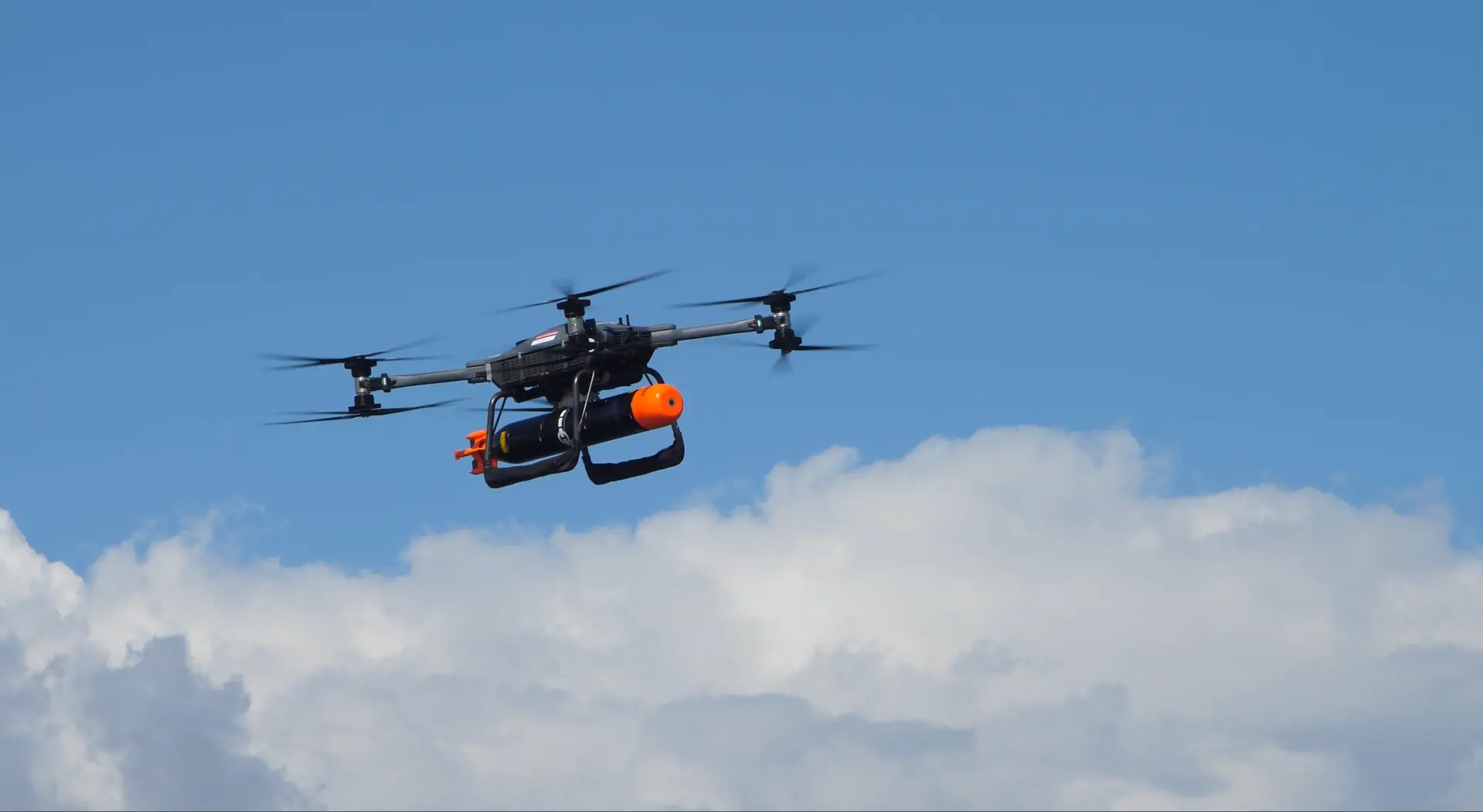The United Kingdom’s defense major, BAE Systems, tested a torpedo-release capability from a heavy quadcopter drone during an event of the North Atlantic Treaty Organization (NATO) in Portugal on September 27, in a step towards incorporating unmanned systems in naval and anti-submarine warfare.
Russia ‘Attacks’ NATO Ally With Electronic Warfare; Romania Accuses Moscow Of Jamming Its Ships
BAE Systems and Malloy Aeronautics demonstrated the capabilities of the T-600 heavy-lift uncrewed air system (UAS), where it dropped an inert training variant of Sting Ray torpedo into the waters inside a harbor.
A basic test that performed an elementary weapons release, the experiment is nevertheless significant as it serves to multiply the logistics and combat functions of a fleet assimilating unmanned systems. The exercise where the demonstration occurred was Robotic Experimentation and Prototyping with Maritime Uncrewed Systems (REPMUS).
Specifically, Britain has tested other tasks for the drone in a series of drills over the last year. Earlier this month, the Royal Navy used a large UAV from the W Autonomous Systems (WAS) to haul supplies from the coast to an aircraft carrier at sea.
Meanwhile, Malloy’s T-650 and TRV-150 drones have been displayed carrying Brimstone air-to-ground missiles and tested for tactical battlefield logistics roles in a previous exercise.
Drone Drops Torpedo in the Water
A video released by BAE Systems on September 27 showed ground crew strapping the Sting Ray on the T-600’s underbelly and an operator with a remote console flying the drone a little above the port waters before releasing it. The torpedo is then recovered in a ‘release trial’ of a weapon.
The torpedo-firing role performed by the drone is very similar to naval light utility and multi-role helicopters, where the torpedo or an anti-ship missile is released based on guidance and targeting provided by ship-based sonars, anti-submarine warfare helicopters, or the torpedoes’ and missiles’ own active or passive homing, to lock on to enemy submarines/ships.

The capability is revolutionary in terms of allowing light corvettes and frigates that cannot carry more than one naval helicopter to release torpedoes after enemy submarines are detected on the ship’s bow or towed array sonars.
These ships have enough space to carry two to three units of such drones, which, besides releasing torpedoes, can also undertake light logistics tasks between a sailing fleet without pressing into service larger helicopters or fixed-wing aircraft.
All About Unburdening Bigger Platforms
Naturally, the drone does not have the power, lift, and targeting capabilities to track underwater targets. However, that isn’t a significant drawback, considering that even naval utility helicopters double up as weapons-release platforms, with targeting data received from other onboard systems.
Another benefit is the man-hours it spares the human crew of helicopters since it eliminates fatigue and can stay over the water for extended periods. Having a drone that takes routine tasks off larger manned platforms offers immense flexibility to naval commanders.
Various militaries see Alternative weapons deployment means as force multipliers, where being fired from non-traditional platforms enhances their technical performance in many respects. The statement from Dave Quick, head of underwater weapons at BAE Systems, reflected this.
“Our development of Sting Ray Mod 2 is focused on weapon effectiveness once deployed and increasing how Sting Ray can be deployed. We are extending the breadth of platform interfaces supported as part of this. We are maturing new torpedo deployment mechanisms, including drones, to explore the operational benefits to Anti-Submarine Warfare and or Anti-Torpedo defense.”
You've seen drones before, but not like this.
In partnership with Malloy Aeronautics, we recently demonstrated the T-600 heavy lift, all-electric vertical take-off and landing (eVTOL) demonstrator aircraft, at a recent NATO event in Portugal. 👇https://t.co/f1gCRbbKwc pic.twitter.com/nXe6rwhkoa
— BAE Systems Air (@BAESystemsAir) September 27, 2023
NATO Allows Members To Test Drones
The T-600 is an electric-powered demonstrator aircraft capable of vertical take-off and landing, can carry a payload of 200 kg, and can speed up to 140 kilometers an hour. It also has an 80-km range depending on the payload. It has twin rotors, one above the other, on each of the four arms.
Performing before 15 NATO partners, including Ireland and Sweden, the drone flew in “a safe and controlled area to test concepts, requirements, new and advancing technologies in respect of Maritime Uncrewed Systems.”
This means the REPMUS serves as a platform to test drone concepts developed by members’ state-owned or private defense companies that, if successful and credible, can be incorporated into the alliance’s force structure.
“The T-600 demonstrator is designed to develop, validate, and display technologies that may be applied to the T-650, a completely new design of an all-electric heavy-lift UAS that will offer rapid reconfiguration capabilities applicable to military, commercial, and humanitarian uses.
“The T-650 will provide significant capabilities in the areas of automated logistics and resupply, casualty evacuation, and anti-submarine warfare while reducing the environmental impact of our armed forces,” the BAE Systems statement added.
- The author can be reached at satamp@gmail.com
- Follow EurAsian Times on Google News